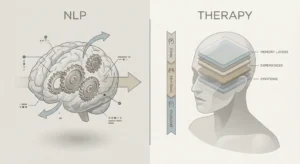Ever sat in a meeting, shared an idea and felt like no one heard you? Not just your words but you. That’s the difference between someone listening to reply and someone listening to understand.
If you’ve ever wondered why dynamic empathetic listening matters so much in those moments, the answer lies in how it makes people feel genuinely heard. Great leaders know the difference. They don’t just hear they tune in. They listen in a way that makes people feel seen, respected, and safe to speak up. That’s what dynamic empathetic listening is all about.
In today’s fast-moving workplaces, where teams are stretched thin and distractions run high, this kind of listening isn’t a nice-to-have it’s a must. It builds trust faster than any team-building exercise, diffuses tension before it explodes, and helps leaders make smarter, more human decisions.
So why don’t more leaders do it? The truth is, most were never taught how. They’re busy solving problems, putting out fires, or focusing on results and they miss what’s really going on under the surface.
In this article, we’ll break down what dynamic empathetic listening really looks like, why it’s one of the most valuable tools a leader can develop, and how to start doing it in a way that actually works.
What Is Dynamic Empathetic Listening?
Dynamic empathetic listening is a leadership skill that goes beyond the basics of hearing words it’s about truly understanding what’s being communicated, both verbally and non-verbally. While traditional listening focuses on processing words, dynamic empathetic listening is responsive and adaptive. It requires being attuned to the speaker’s tone, body language, and emotions, adjusting your response in real-time based on what’s unsaid.
At its core, dynamic empathetic listening is intentional listening. Leaders use this approach to create a safe space where team members feel heard, valued, and understood. It’s about picking up on subtle cues such as a slight hesitation in someone’s voice, a change in their posture, or an underlying emotional tone and responding thoughtfully.
This level of listening creates stronger bonds between leaders and their teams, fosters trust and leads to more effective decision-making. Rather than only hearing the words, dynamic empathetic listeners take in the full context of the conversation. They pause, reflect, and adjust their responses to match the emotional and relational dynamics of the moment.
In practice, dynamic empathetic listening helps leaders uncover hidden challenges, resolve conflicts before they escalate, and ensure that all voices are heard, even when team members hesitate to speak up. By embracing this approach, leaders can bridge the gap between “hearing” and true understanding, ultimately creating stronger, more cohesive teams.
The Core Elements of Dynamic Empathetic Listening

For leaders, developing this skill means becoming more aware of these key components:
- Emotional Presence:
Being fully engaged not multitasking or mentally rehearsing your response. People can sense when you’re not fully with them. - Nonverbal Responsiveness:
Facial expressions, posture, and eye contact communicate empathy just as much as words do. - Reflective Feedback:
Instead of jumping to solve the problem, mirror what you’ve heard and ask for thoughtful follow-ups to explore the issue further. - Contextual Flexibility:
Tailor your response based on the situation and the person. A high-stress performance review calls for a different tone than a casual brainstorming session.
Why Dynamic Empathetic Listening Is a Leadership Strength

In today’s fast-paced, feedback-heavy, and often remote work environments, leadership isn’t just about driving performance it’s about fostering trust, emotional safety, and alignment. Dynamic empathetic listening enables leaders to do all three without burning out their teams or themselves.
This skill transforms leadership from directive to connective. From managing people to truly understanding them.
It Builds Psychological Safety
recognize these emotional cues when leaders listen without judgment, defensiveness drops and honesty rises. This creates a space where team members feel safe to speak up, disagree, and offer new ideas even when they’re uncertain or vulnerable.
And psychological safety isn’t just about comfort it’s a predictor of innovation and adaptability.
For example, During a team meeting, someone cautiously says, “I know this might not be the popular opinion, but I don’t think this campaign will land well with our target audience.” A strong listener won’t rush to defend the plan. Instead, they might say, “That’s an important perspective. What are you seeing that we might have missed?”
That moment validates the speaker, improves the project, and shows the whole team that dissent isn’t punished it’s valued.
It Leads to Better Decisions
Empathetic listeners gather context, not just content. They hear what’s said and what isn’t. That kind of awareness helps leaders make smarter, more human-centered decisions.
When leaders take time to listen deeply, they spot hidden roadblocks, identify root causes, and notice friction points before they escalate.
It also helps them avoid costly assumptions especially when navigating change or cross-functional collaboration.
Real listening reduces the gap between “what the team needs” and “what leadership thinks the team needs.”
It Boosts Morale and Reduces Turnover
In workplaces where listening is the norm, employees don’t have to work harder to be heard. That alone reduces burnout and resentment.
- They don’t need to repeat concerns to get attention.
- They don’t need to sugarcoat feedback or withhold ideas.
- And they don’t feel invisible when they struggle.
When people feel acknowledged especially during high-stress or uncertain times they’re more likely to stay, contribute, and go the extra mile.
According to Gallup, leaders who show genuine concern and empathy drive higher engagement, which directly correlates with increased performance and retention.
It Sets the Tone for the Entire Organization
Leaders model behavior consciously or not. When executives or managers make space for thoughtful listening, it creates a cultural ripple effect.
Teams begin to mirror that behavior in their own communication. Conflicts are approached with curiosity instead of defensiveness. Feedback becomes a conversation, not a confrontation.
This cultural shift makes organizations more resilient, more collaborative, and more human.
Listening well isn’t just a skill it’s a signal. It tells your team that you matter. Your voice matters. Let’s build.
How Dynamic Listening Helps Navigate Conflict and Change
Even the best teams hit roadblocks. Deadlines get missed. Tensions rise. Strategic pivots shake people’s confidence. These moments can either deepen trust or destroy it.
And the difference often comes down to one skill: how well leaders listen when things get hard.
Dynamic empathetic listening is especially powerful in times of conflict or change. It helps leaders create space for discomfort without defensiveness. It keeps conversations productive when emotions are high. And it gives people the clarity and confidence they need to move forward.

It De-escalates Tension in High-Stakes Situations
When conflict arises, most people want to feel heard before they’re asked to change. If they don’t, they either shut down or dig in.
Leaders who practice dynamic listening can recognize these emotional cues in real-time. They resist the urge to rush in with solutions and instead pause to understand the deeper issue.
Imagine a team lead frustrated over being left out of a project decision vents during a meeting: “No one asked for my input. I’ve been working on this for months and suddenly I’m out of the loop.” A reactive manager might defend their decision or brush it off. A dynamic listener would say, “I hear that you’re feeling sidelined. That wasn’t my intention, and I want to understand what this felt like from your side.”
That response doesn’t fix everything but it opens the door. It lowers tension and invites dialogue instead of defensiveness. This type of response makes it easier to resolve conflict without blame or shame and with far less collateral damage.
It Drives Adaptability During Change
Whether it’s a restructuring, a new system rollout, or a change in leadership people respond to change emotionally first, logically second.
Listening with empathy helps leaders understand where resistance is coming from not just what’s being said, but why it’s being said.
Maybe someone’s resistance isn’t about the new direction it’s about fear of being replaced. Or burnout. Or uncertainty about their role in the bigger picture. By listening first, leaders can address the emotional undercurrents that often derail even the most well-intentioned initiatives.
Change succeeds when people feel seen in the process not steamrolled by it.
It Strengthens Trust in Uncertain Times
During change, employees are often looking for one signal: “Can I trust leadership to be honest, fair, and present?”
Listening is one of the fastest ways to send that signal. Even when a leader can’t change the outcome like layoffs or structural shifts taking time to listen shows respect. It says, “You’re more than just a number in a strategy deck.”
That kind of care doesn’t erase hard news. But it preserves dignity, retains trust, and leaves the door open for future engagement.
Common Barriers Leaders Face with Empathetic Listening
Dynamic empathetic listening might sound simple just be present, be curious, and respond with care. But in practice, it’s one of the hardest leadership skills to consistently apply.
Why? Because leaders are human too. They juggle competing priorities, carry emotional fatigue, and often feel the pressure to perform not pause.
Here are the most common barriers that get in the way of effective listening and how to overcome them:

Internal Barriers
- The Fix-It Reflex: Leaders are trained to solve problems. But rushing to solutions often cuts off conversations before people feel heard.
Shift the mindset from “solve” to “understand first.” Let people finish before offering options. - Impatience or Time Pressure: In fast-paced environments, deep listening can feel like a luxury. Schedule time for focused check-ins. Even 10 undistracted minutes can go further than a distracted hour.
- Emotional Exhaustion: When leaders are burnt out, it’s hard to show up for others with empathy. Build in personal recovery time. Listening is emotional labor and it needs fuel.
External Barriers
- Digital Distractions: Phones, pings, and screens interrupt focus. In virtual meetings, it’s even easier to mentally check out.
Close tabs. Turn off notifications. Let your team know when they have your full attention and mean it. - Transactional Culture: In some organizations, listening is seen as a delay to getting things done. Lead by example. Show that good listening accelerates clarity, trust, and better decisions.
- Hybrid and Remote Dynamics: Without body language and in-person cues, emotional signals are easier to miss. Use video when possible. Ask explicitly, “How are you really doing?” and follow up with tone-check questions.
Practical Ways to Cultivate Dynamic Empathetic Listening as a Leader
The good news? You don’t have to be a trained therapist or a natural empath to listen like a great leader. Dynamic empathetic listening is a skill one you can build with intention, practice, and small daily shifts.

Here’s how to start integrating it into your leadership style right away:
Schedule Listening Into Your Week
Listening well takes time and it won’t happen unless you make space for it.
- Block out focused time for 1-on-1s that aren’t just about tasks.
- Ask open-ended questions like, “What’s been on your mind this week?” or “Is there anything you need more support with?”
- Use “quiet meetings” where the first few minutes are for reflective sharing, not updates.
Don’t leave listening to chance put it on the calendar.
Use the “Listen–Validate–Ask” Framework
When emotions are high or conversations feel charged, use this simple structure:
- Listen: Stay silent until the speaker finishes. Don’t interrupt, even to agree.
- Validate: Reflect on what you heard. “It sounds like you’re frustrated by how that decision was made.”
- Ask: Invite more. “Can you tell me more about what you were expecting?”
This framework slows down reactive conversations and helps people feel seen without judgment.
Model It Loudly and Often
Teams learn how to listen by watching how you do it.
- Share when you’ve changed your mind based on what you heard.
- In meetings, call out good listening: “Thanks for catching that nuance great observation.”
- If you miss something or interrupt, own it: “Let me step back I want to hear your full thought.”
Modeling vulnerability and presence permits others to do the same.
Leverage Tech to Enhance not Replace Listening
In a hybrid world, listening looks different but it’s just as important.
- Use async tools like Loom or voice memos to offer more human feedback than a Slack message.
- Review meeting transcripts to catch what you might’ve missed in real-time.
- Use check-in polls to surface signals from quieter team members.
Technology can help you hear more but it shouldn’t replace human connection.
Train Your Team in Listening Culture
Don’t keep this skill siloed at the top make it part of your team’s DNA.
- Host a “listening workshop” during a team offsite or all-hands.
- Create shared listening agreements: no interruptions, ask before advising, etc.
- Encourage “empathy audits” after high-stress projects: How did we communicate? Where could we have listened better?
Listening isn’t just a one-on-one skill it’s a team standard.
Empathetic listening doesn’t require perfection. It requires presence, humility, and repetition. The more you do it, the more natural it becomes and the stronger your leadership impact grows.
How Dynamic Empathetic Listening Transforms Leadership Outcomes
You’ve seen how dynamic empathetic listening builds trust, defuses conflict, and makes people feel seen. But its impact doesn’t stop at personal connection it creates a ripple effect that shapes everything from team culture to bottom-line results.

When leaders consistently practice this kind of listening, the entire organization benefits.
Better Culture, Better Bottom Line
A culture built on listening is a culture where people feel safe, respected, and empowered to contribute.
- People speak up earlier reducing costly mistakes.
- Teams collaborate more openly cutting down on politics and rework.
- Feedback flows more freely helping ideas evolve faster.
Organizations with strong listening cultures are more innovative, agile, and resilient. Studies show that companies with high levels of employee engagement and psychological safety see significant gains in productivity, profitability, and customer satisfaction.
When employees know their voice matters, they invest more of themselves in the mission.
It Develops Future Leaders
Listening isn’t just a leadership trait it’s how leadership potential is spotted and grown. When leaders make space for reflection, curiosity, and shared ownership, they’re also:
- Mentoring others through example.
- Encouraging critical thinking over compliance.
- Giving emerging leaders room to develop their own voices.
Team members who feel heard are more likely to step into leadership roles themselves because they’ve seen what good leadership actually looks like.
It Sharpens Strategic Vision
Listening well helps leaders stay connected to the front lines, where real-world insights live. Through dynamic listening, leaders pick up
- Patterns and blind spots in decision-making.
- Unspoken resistance to change.
- Early signals of shifting team dynamics or market needs.
Instead of reacting to problems too late, empathetic leaders adjust earlier, smarter, and more intentionally because they’re grounded in what people are really experiencing.
Listening keeps leaders from leading in a vacuum and brings strategy closer to reality.
It Future-Proofs the Organization
The workplaces of the future will demand greater emotional intelligence, adaptability, and inclusion. Empathetic listening is the bridge to all three. It enables:
- Inclusive leadership, where diverse perspectives are invited and respected.
- Adaptive teams, that evolve quickly because they’re attuned to change.
- Resilient cultures, where people feel supported even through uncertainty.
In a world where AI, automation, and remote work are rewriting the rules, listening remains one of the most uniquely human and irreplaceable leadership skills there is.
Final Thoughts: Listen Like a Leader Lead Like a Human
In a world where attention is scarce and trust is fragile, how you listen matters more than ever.
Dynamic empathetic listening isn’t just a feel-good leadership trait it’s a transformative tool. It builds teams that speak up, cultures that adapt, and strategies that actually work because they’re grounded in real needs not assumptions.
Whether you’re managing a growing team, leading through change, or shaping the future of your organization, the most powerful thing you can do might be the simplest:
Be present. Listen fully. Respond with care.
You don’t need hours of free time or a perfect script. You need consistency. Curiosity. The willingness to pause and say, “Tell me more.”
Because when you listen like a leader, you lead like a human and that’s the kind of leadership the world needs now.





